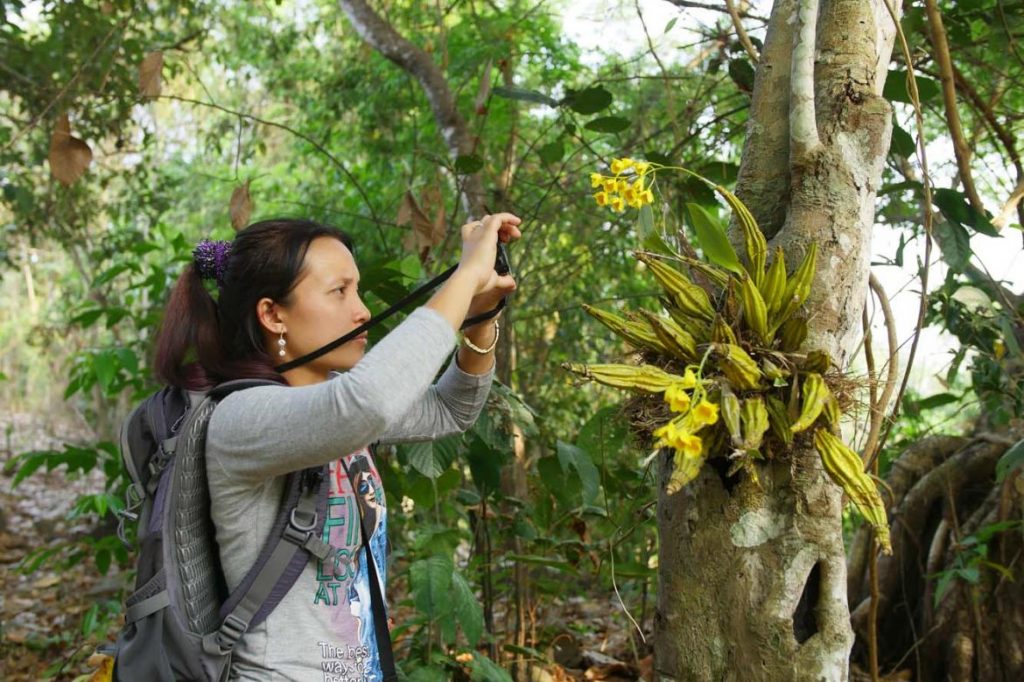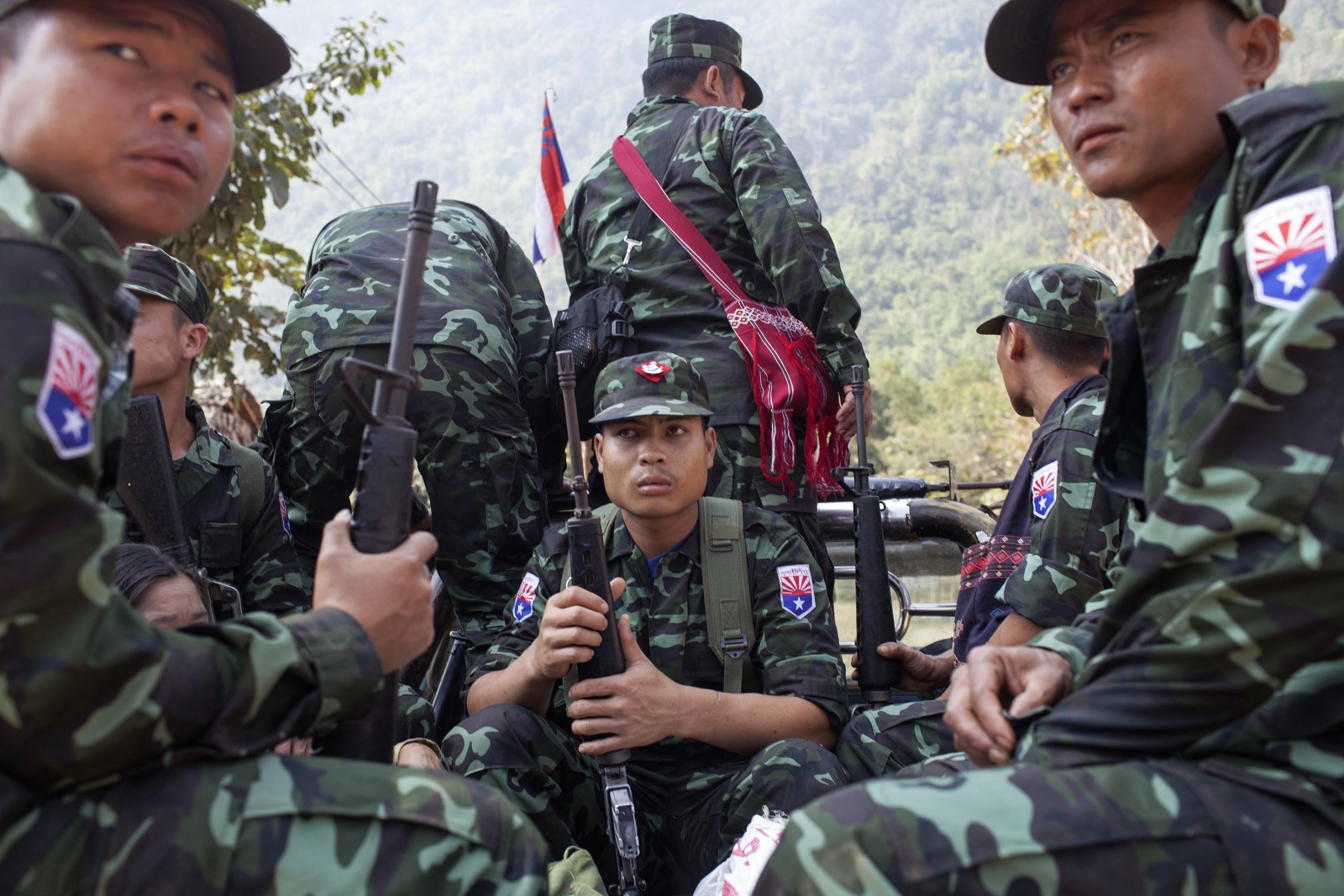A project to document orchids in a conflict-hit area of Kayin State has uncovered almost 100 rare species – and some unknown varieties – while also encouraging women to take on leadership roles in their communities.
By VICTORIA MILKO | FRONTIER
IN EARLY August a community-led women’s research project released a study that documented more than 100 types of orchids in Kayin State and the surrounding region.
Conducted over five years, the study is part of the Salween Peace Park initiative and aims to empower women and contribute to grassroots conservation efforts.
Saw Paul Sein Twa, the director of the Karen Environmental and Social Action Network, said the project was a response to increased illegal logging and orchid trading.
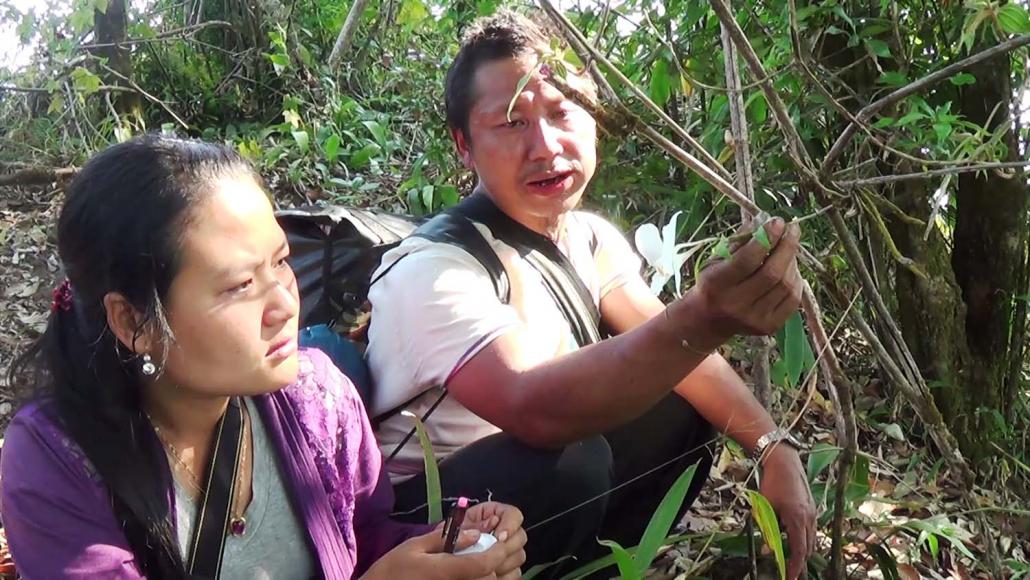
The project encourages women to take on leadership roles in their communities. (Supplied)
Support more independent journalism like this. Sign up to be a Frontier member.
“In early 2000 we organised research in Kayin State and spent three months in the jungle to observe what was going on in the area,” he said. “And illegal logging and orchid trade were something we quickly noticed.”
Conflict has also contributed to deforestation and other environmental destruction, he said.
“There was also a really strong crackdown by [the Myanmar] military, which caused other problems in the area, including parts of the jungle [being] destroyed and people being forced to hide in the jungle and use its resources.”
In response to the research group’s observations, KESAN, along with other Karen community organisations, held a meeting and decided to form the orchid research team. Significantly, the team was to be led by women.
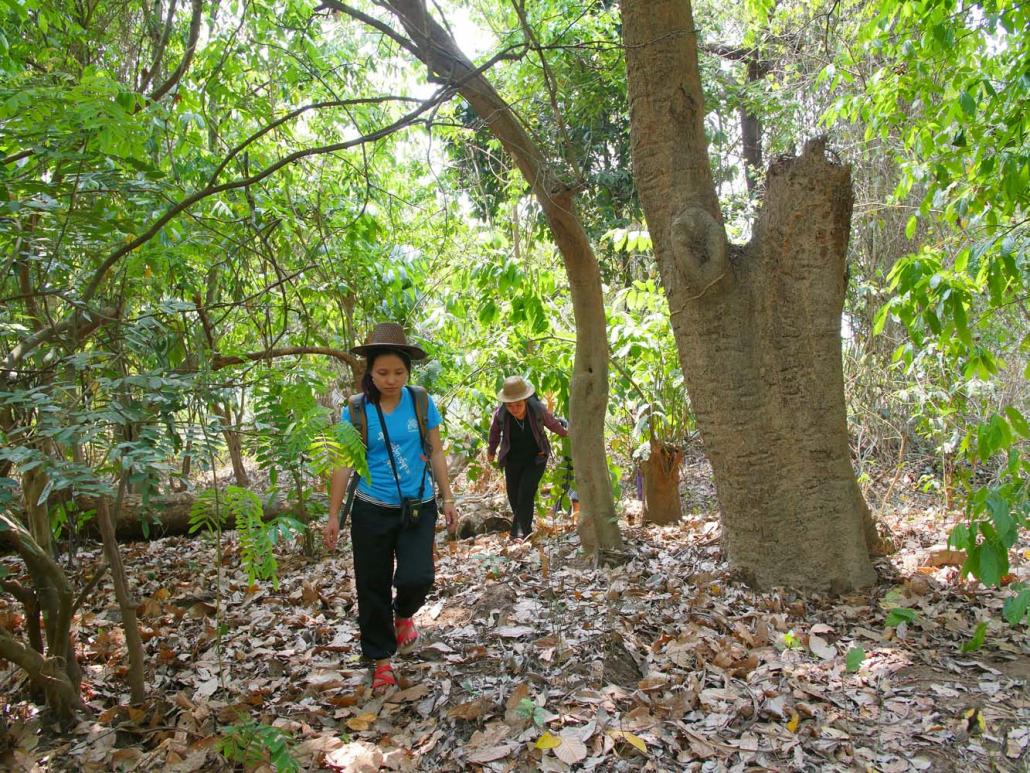
Conducted over five years, the study is part of the Salween Peace Park initiative. (Supplied)
“We thought the research group should be women because women [in our culture] have unique knowledge of flowers,” said Paul Sein Twa. “This is the universal truth, women know more about flowers.”
Six women from the community who expressed interest and were able to commit to the time were chosen to lead the project. They then headed into the jungle and began searching for and documenting orchid species.
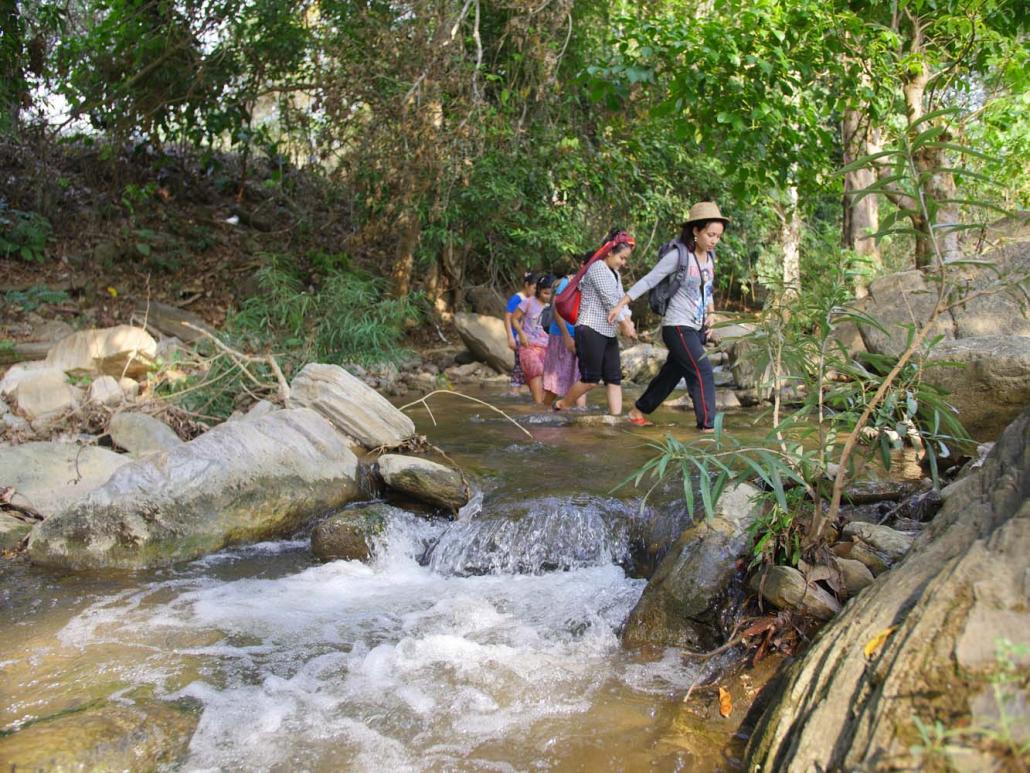
Six women from the community searched for orchids in the forest and documented the species. (Supplied)
“The hardest part for me was that some of the orchids were in very tall trees in a very cool place, so it was hard for us to find them,” said Naw Hsa Yu, one of the researchers of the project. “The other thing is some of the orchids were very old so we just saw the flower and not the roots or leaves, making it very hard to identify what it was.”
The researchers concede that the study didn’t follow typical scientific procedures.
“We ended up having to name some of them ourselves, since we couldn’t identify them,” Hsa Yu said with a laugh.
The full report, which was launched in August to coincide with celebrations to mark International Day of World’s Indigenous People in the Ei Htu Hta IDP camp in Kayin State, documented and categorised 121 orchids, with four remaining as unknown species. Ninety-four of these are considered endangered on a list maintained under the Convention on International Trade in Endangered Species of Wild Fauna and Flora.
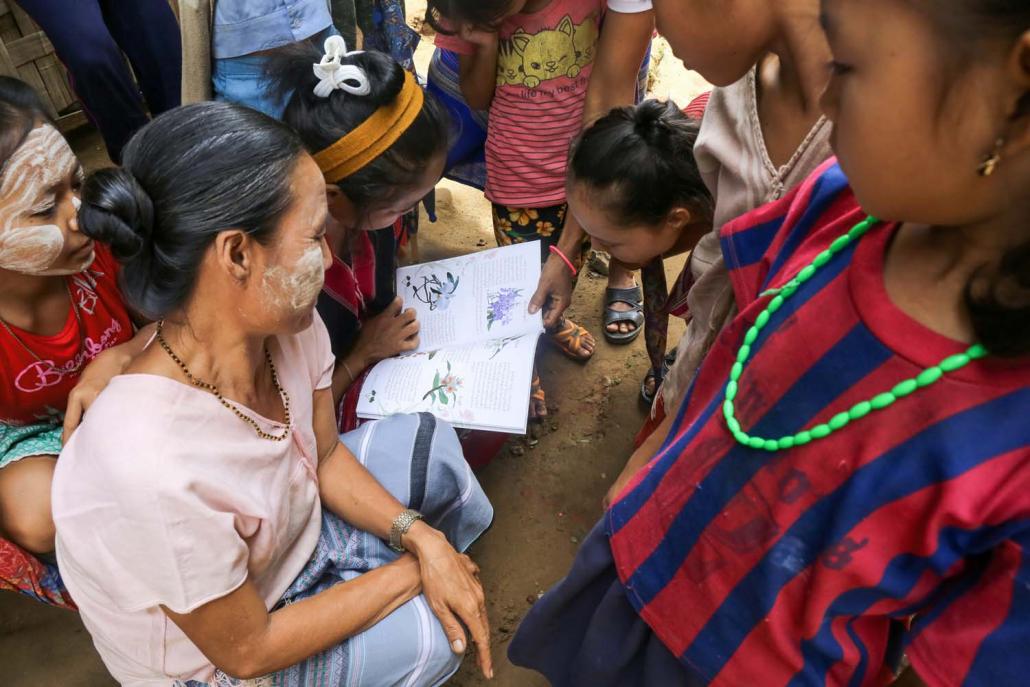
Women read the orchid report at its launch in Ei Htu Hta IDP camp. (Victoria Milko | Frontier)
Those who participated in the study say they were proud of the final report but many believe the real achievement is the empowerment of women that it has encouraged.
“I feel proud of myself and the other women researchers that they can release this report,” said Hsa Yu. “I feel it encourages other women in the community to work closely together more in the future for other research projects.”
The study has so far only been published in Karen and Burmese languages but KESAN hopes the research will eventually reach a larger audience.
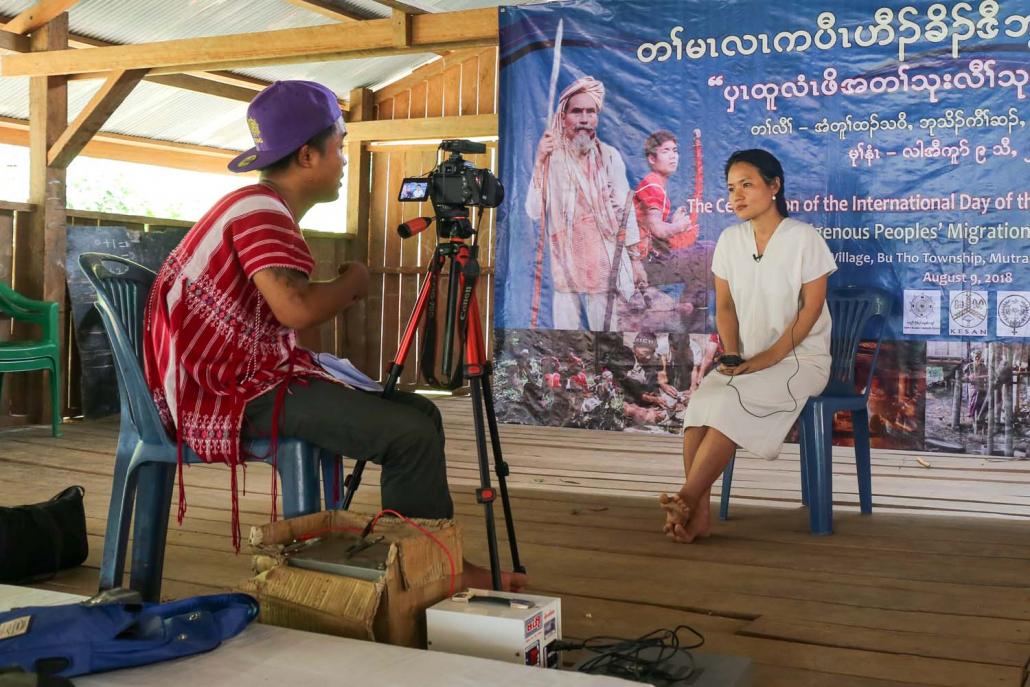
Research participant Hsa Yu is interviewed during the report launch. (Victoria Milko | Frontier)
In Ei Htu Hta IDP camp, where groups of people took a break from International Day of World’s Indigenous People celebrations to sit on the red dirt floor of the camp’s gathering area and flip through the report, Hsa Yu voiced another desire.
“I hope people see the report and realise that they shouldn’t destroy nature, and that fighting should stop so we can conserve the environment and live peacefully,” she said. “That is what I hope more than anything.”


